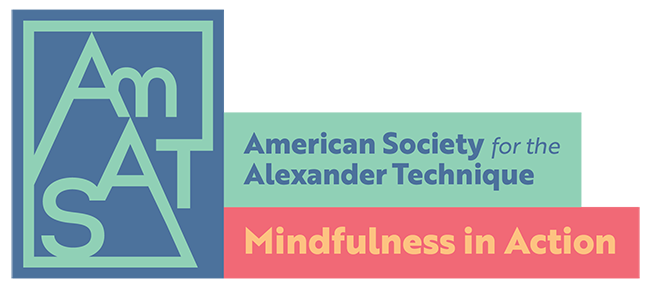American Society for the Alexander Technique
Complete Story
01/24/2018
Baby Steps to Better Breathing
June 29, 2009
by ALLISON AUBREY
Human beings breathe an average of 17,000 breaths a day. But who's counting? It's a process we take for granted, yet experts say good technique can help us slow down breath and use it to control stress. They say the movement of breath should emulate sleeping babies — with the belly gently rising and falling.
The Stress Response
If you've ever been in your car when suddenly the person in front of you slams on the brakes, the typical reaction is to gasp — taking a quick in breath.
"It's a natural response," says Edward Bilanchone, a long-time instructor of breath and movement using the Alexander Technique. The quick inhale brings more oxygen in and sets off a flood of hormones that heighten our senses and help us respond quickly. "It helps us survive."
The trouble comes when chronic stress sets in. Under stress, a lot of interactions start to feel like near-collisions. "It becomes a part of us and we never release out of it," says Bilanchone. When we're stressed we may cheat the exhale or even hold our breath for moments. As adults, we can develop these bad habits that interfere with the natural rhythm of breath.
"Babies breathe easily, softly," says Bilanchone. Their backs and bellies move as their diaphragms move. "It's just happening."
Anatomy Of The Breath
The diaphragm is the large, dome-shaped muscle that separates the chest from the abdominal region. It controls about 75 percent of the movement of breath. When we breathe in, the diaphragm moves downward, creating a vacuum in the lungs and pulling air in. When the belly moves up and down during relaxed breathing it's a sign that the diaphragm is fully contracting and expanding.
Alexandra Phillips is keenly aware of all this anatomy. She's an opera singer, and breath is critical to her performance. But, she says, a few years ago she was thinking about breath too much and getting all tangled up.
"If I'm telling myself be tall, stand straight, take a deep breath," says Phillips, "it translates to me as tension."
Phillips says she realized she was almost trying too hard. She sensed a lot of constriction in her throat, which inhibited her breath.
"So much of what my teachers were telling me was 'let go,' " says Phillips. And she recalls thinking, "Well, what the heck does that mean?"
Relearning How To Breathe
In searching for a more technical explanation of "letting go" she began taking lessons with Bilanchone.
When she first started her lessons, her posture was forced and her chest was so puffed out that she was almost in a backbend, says Phillips. As a result, the sound that she produced in her singing was thin and reedy — not what a soloist wants.
"It was very cut off from my breath and core," she says.
Bilanchone helped her make subtle posture changes. For instance, she worked on evenly engaging the muscles in her feet and legs as she stood and lengthening her spine.
"When your spine is lengthened the muscles that act on the diaphragm are at their optimal resting length and they have more potential for speed, strength and power," says Bilanchone.
Health Benefits Of Controlled Breath
Improving control of the breath while simultaneously learning to relax is critical to Phillips' singing career. But experts say everyone can benefit.
"If you're uptight and you're not taking a deep breath, you're not getting efficient oxygen exchange," says Alice Domar, a therapist and researcher on stress and women's health issues. She teaches diagrammatic breathing as part of a stress management practice in Waltham, Mass. The technique focuses of fully expanding the diaphragm to fill lungs to optimum capacity.
"The lowest third of our lungs have the most efficient oxygen exchange," says Domar. "So when you take a diaphragmatic breath your heart doesn't have to work so hard."
A sleeping baby breathes deeply naturally, but this technique is also taught in some hospitals. Jon Seskevich, a stress management educator at Duke University, teaches soft belly-breathing to hospital patients who are coping with serious illnesses such as cancer.
"When you check on patients at night when they're sleeping, you see the belly going up and down." Everything slows down and relaxes.
Seskevich says when your muscles are tight it increase the need for oxygen. "So if you're breathing shallow, the muscles will stay tense."
He says when people practice or cultivate relaxation breathing in their daily lives, it affects the whole body.
"The heart rate can go down, the blood pressure lowers a little bit and breathing deepens," says Seskevich.
The challenge is to learn to manage the breath and keep up the deep breathing amidst our busy lives.

